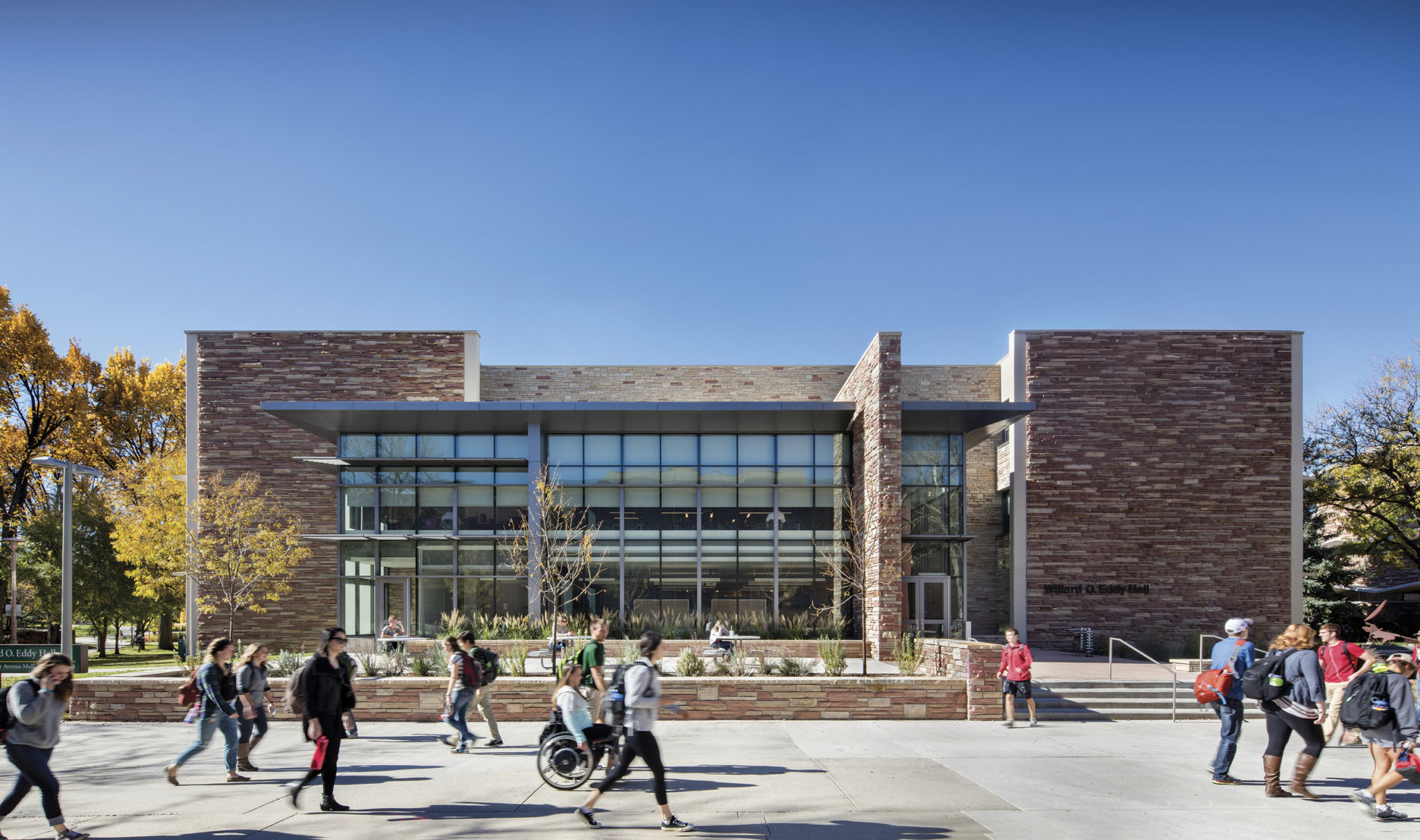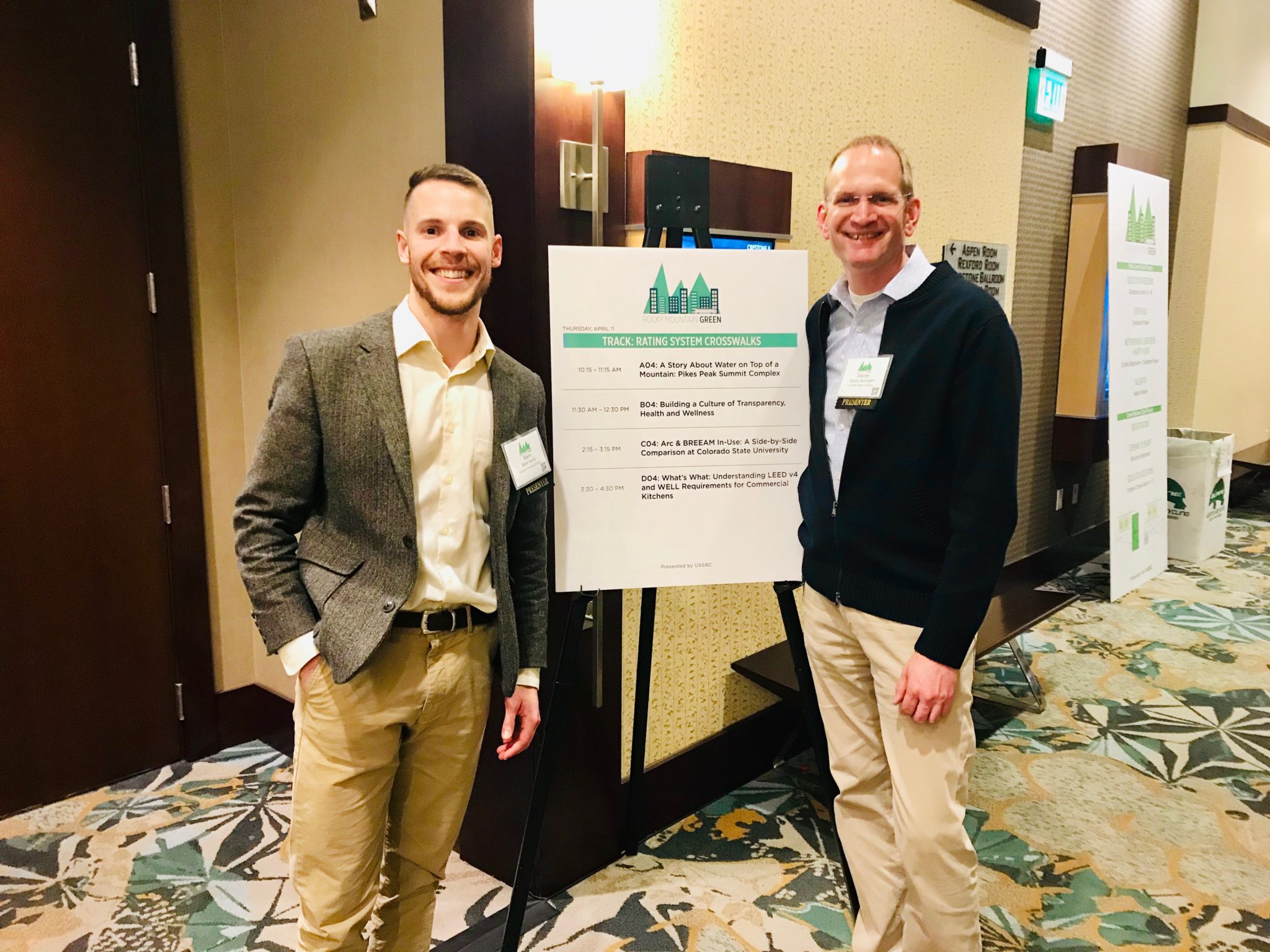Colorado State University is often rated as of the most sustainable campuses in the country, but it’s hoping to burnish its environmental reputation even further by researching new methods to evaluate and prioritize building operations in less efficient buildings on campus.

In early 2018, Mark Norris, a former sustainability associate at the Institute for the Built Environment and graduate of the Construction Management program at CSU, received one of 12 summer internships with the CSU Energy Institute focused on supporting students pursuing careers in energy.
Norris’ research, the idea for which originated from Brian Dunbar, the executive director of IBE, and Jen Schill, senior manager at IBE, was a comparison study of two primary tools that are used to measure the efficiency and overall sustainability of a building. The idea was to determine the functionality and feasibility of these tools as they could apply to the CSU campus and propose a recommendation to CSU facilities as the research concluded.
The research was primarily funded by CSU Facilities, while the grant from the Energy Institute enabled Norris to take the research a step further. Stacey Baumgarn and Carol Dollard of Facilities Management were instrumental throughout the research initiative, playing a key role in gathering data and being closely involved in the final evaluation.
“CSU is one of the most sustainably minded campuses in the nation, and always likes taking things a step further,” said Norris. CSU already has 30 Leadership in Energy and Environmental Design (LEED)-certified buildings on its campus, “so we thought, ‘here’s a potential opportunity for us to say that we’ve not only built sustainably, but we also measure, track and benchmark the sustainability of our existing buildings too.’”
Comparing systems
The two technology-based platforms Norris utilized were Arc, a tool associated with the U.S. Green Building Council and Green Business Certification, Inc., and BREEAM, a United Kingdom-based performance program that preceded LEED and is managed by BRE. Norris’ research tested these two different models on CSU’s Eddy Hall to determine which system would be most effective and feasible for use on CSU’s campus.
“Every year 1% of the entire building stock [across the country] is new construction, and the other 99% is existing buildings,” said Norris. “And 35% to 45% of the entire annual energy consumption in the United States comes from not cars, not food, not transportation, but from buildings and the energy they use to function, including cooling, heating and lighting.”
Norris’ research on Eddy Hall was based on benchmarking the building’s resource consumption, and overall sustainability performance and determining which tool best measured these factors.

CSU Facilities Management already uses a few in-house energy management frameworks, so Norris wanted to provide them with a program option that had expanded sustainability-related components and yet was feasible, practical and financially within their means.
“Because this is a sustainability benchmark, we’re not only benchmarking energy use and water consumption,” Norris explained, “but also we’re taking a look at occupant satisfaction, fresh air supply, all kinds of different things.”
One of the considerations of the research was how effective each system was in providing guidance for making improvements. In areas in which a building was determined to have room for improvement, was there an indication of specific opportunities to begin resolving these shortcomings?
“The results really would help us prioritize which buildings to invest money in retrofitting,” said Norris.
The results
At the conclusion of the study, Norris gave an hour-long presentation to CSU Facilities Management, Parking and Transportation Services and a couple faculty members from the Department of Construction Management. “The research team was in favor of Arc,” he said. He explained that the research could have been bolstered by a few more trial runs on other buildings, but Arc was the most practical and feasible of the two systems when considering CSU’s time and resources. The Arc platform was more aligned with the processes and approach of CSU Facilities.

The other deliverable of the research is a white paper, which is currently being peer reviewed before publication. “The white paper is a qualitative evaluation of what we saw, some of the technical aspects of it, and also our interpretation of what we experienced,” said Norris.
In the short term, CSU Facilities would prioritize a cost-per-square-foot evaluation focused on reducing energy consumption, whereas the Arc and BREEAM platforms offer more holistic sustainability benchmarking.
“But I think they would all agree that this has been a very good learning experience, and should they be presented with an opportunity in the future, they will definitely have a lot more information and background on these tools,” said Norris.
Norris graduated in December 2018 and now works at Apogee Consulting Group, an architecture firm based in Fort Collins. He loves his job and is learning a lot as an assistant project manager. He hopes to build his project management knowledge and technical knowledge of building systems at Apogee to complement his passion for sustainability and energy-efficient design in his career moving forward. Apogee Consulting has been very supportive in Norris’ effort to complete the deliverables of this study.
“The Energy Institute and the Institute for the Built Environment really went to bat for me during my research and my final year at CSU,” he said. “They gave me the opportunity to conduct instrumental research. They’ve done so many things for me, and I am so grateful.”
The Institute for the Built Environment and the Department of Construction Management are both part of CSU’s College of Health and Human Sciences.